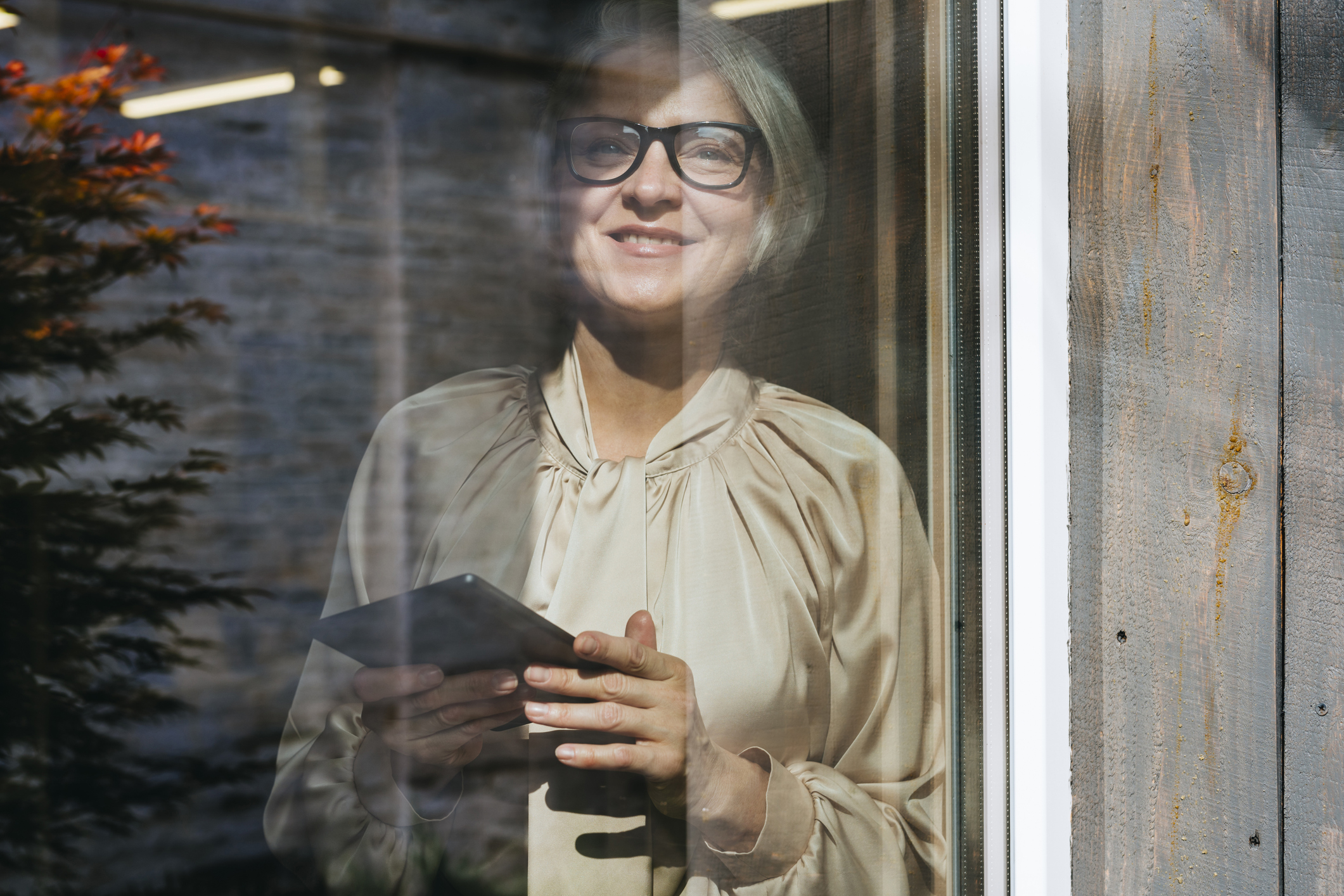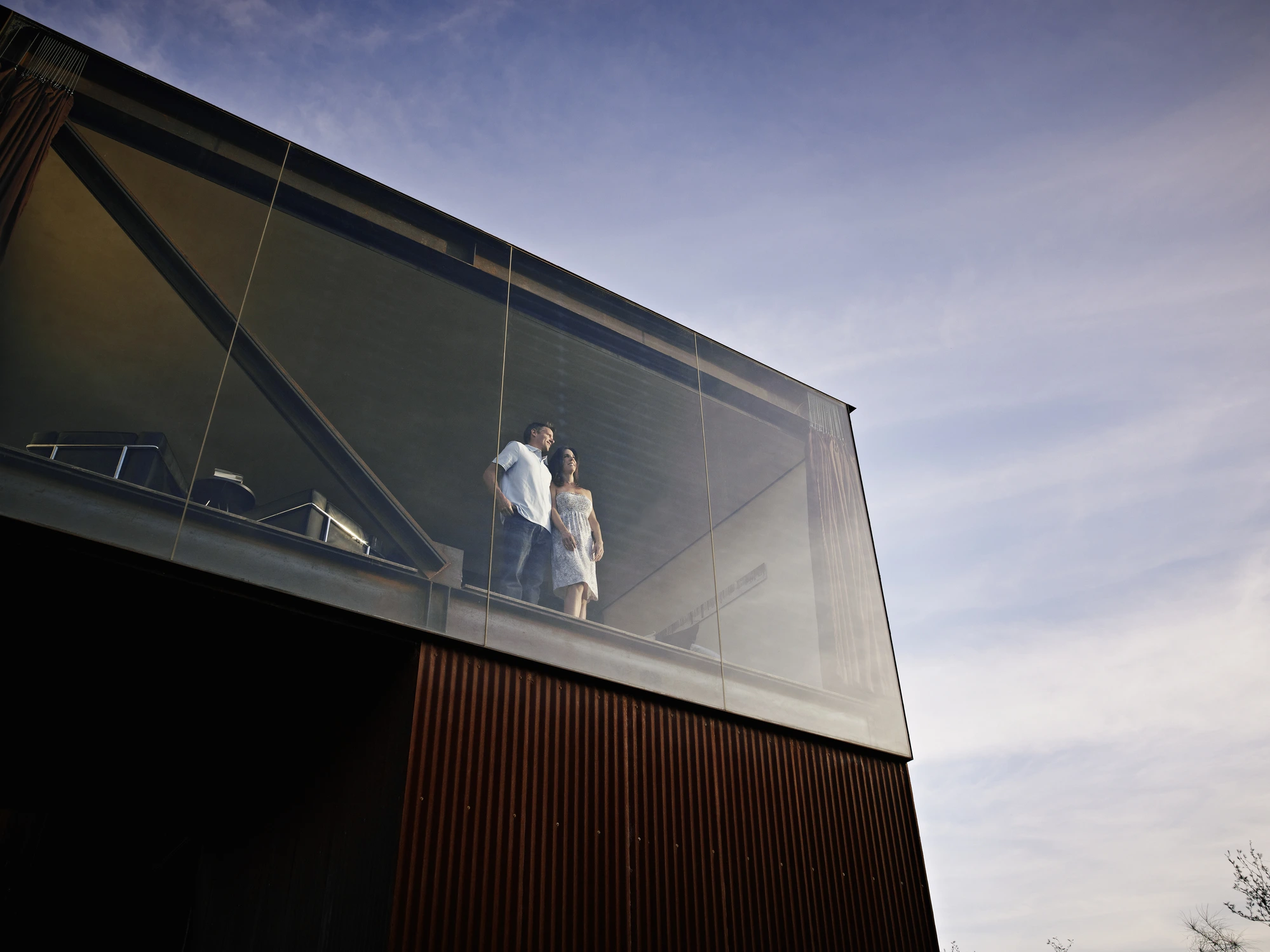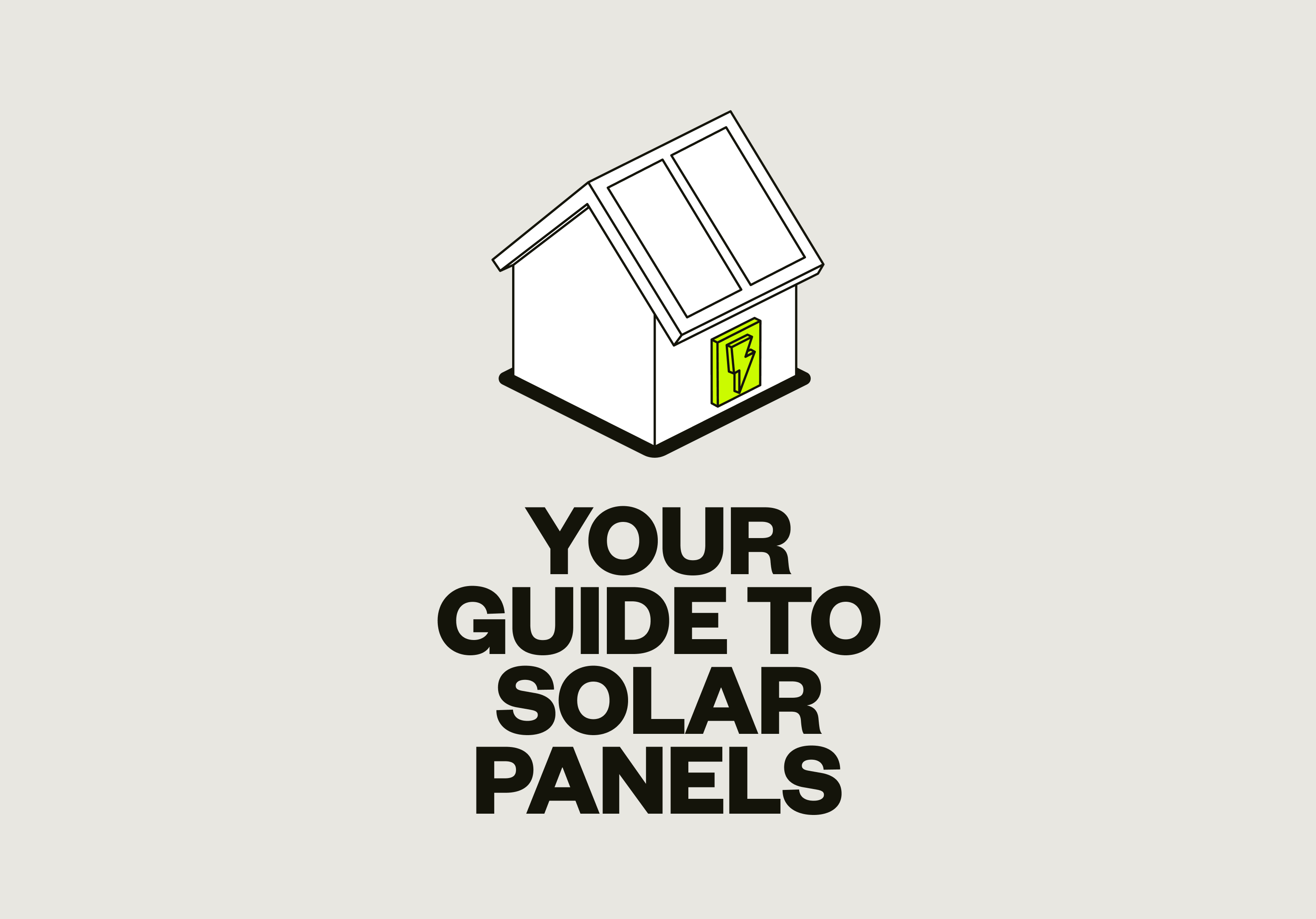November 2025
How long do solar panels last?
Explore the lifespan of solar panels and how you can make sure they do they do their job for longer

The average solar panel lifespan is around 25 years. Most panels continue to generate electricity well beyond this, but their efficiency may gradually decrease over time. Factors like weather, maintenance, and installation quality can all influence how long your solar panels perform at their best.
Understanding the typical solar panel lifespan matters because it gives you a realistic view of how long your system will provide savings, and when you might need to think about a replacement.
How Long Do Solar Panels Last in the UK?
Whether you’re considering investing in solar energy or want to know more about the lifespan of your installation, one of the most important questions to ask is: How long do solar panels last in the UK? The good news is that regardless of where you’re situated, solar panels have an expected lifespan between 25 to 30 years, with well-maintained panels potentially lasting for many more.
But there’s a lot more to solar panel lifespan and how long they last.
Learn more about the lifespan of different types of solar panels and what affects their longevity. Plus, signs that your panels may be ageing, and how to extend their lifespan.
The Average Lifespan Of Different Types Of Solar Panels
If you already know a bit about how solar energy works, you might already know that there are three different types of solar panels. Each of these has its own expected lifespan.
How Long Do Monocrystalline Solar Panels Last?
Monocrystalline solar panels are made from monocrystalline solar cells. They’re easily identifiable by their black colour.
On average, they are expected to last 25 to 30 years, but newer mono panels can last up to 40 years or longer. They last the longest out of all the different types of panels because they are made using a slice of a single silicon crystal, which reduces the potential failure points in the photovoltaic (PV) cell. These are the most expensive solar panels due to the cost of producing monocrystalline cells.
How Long Do Polycrystalline Solar Panels Last?
Polycrystalline solar panels are made from polycrystalline solar cells. They’re easily identifiable by their blue colour.
On average, these panels last between 25 to 30 years, but they can last up to 35 years. They don’t last as long as monocrystalline solar panels because each PV cell is made of multiple silicon crystals, which means more ways to fail. However, they cost less than monocrystalline cell panels due to their lower manufacturing costs.
How Long Do Thin Film Solar Panels Last?
Thin-film solar panels are made from various photovoltaic materials. The four most common materials used are amorphous silicon (a-Si), cadmium telluride (CdTe), copper indium gallium selenide (CIS/CIGS), and organic photovoltaic cells (OPC). They’re easily identifiable by their physical flexibility.
These panels have the shortest lifespan of the different types of solar panels, averaging between 10 and 20 years, due to the quality of the materials used in producing the PV cell. However, they are also the cheapest of the three types of solar panels.
Do Solar Panels Lose Efficiency With Age?
Yes, even the best quality solar panels gradually lose efficiency as they age. This process is called degradation. According to GreenMatch, most solar panels lose between 0.2% and 0.5% of their efficiency each year, meaning their energy output gradually declines over time.
What does this mean in practice?
If your solar panel starts with a 22% efficiency rating:
- After 25 years at a 0.2% annual loss, it could still be running at around 17% efficiency.
- At a 0.5% annual loss, it would be closer to 10% efficiency after 25 years.
Here’s a simple visual timeline to show how panel efficiency changes over time:
Solar panels don’t suddenly stop working after 25 years, they just produce less electricity than when they were new. High-quality panels, regular maintenance and proper installation can all help mitigate this natural loss of efficiency.
Understanding this gradual change helps you set realistic expectations for your solar investment and long-term energy savings.
Do Solar Panels Make Your Roof Last Longer?
Solar panels can actually help protect the sections of your roof they cover by shielding them from direct sunlight, rain, and harsh weather. This protection may slow down wear and tear, helping your roof materials last longer under the panels compared to exposed areas.
However, the overall lifespan of your roof will still depend on the quality of your roofing materials and the installation. It’s also important to ensure your roof is in good condition before installing solar panels, as making repairs later is more complicated once panels are in place.
Factors That Influence Solar Panel Lifespan
In addition to the various types of solar panels discussed earlier, several other factors can affect their lifespan. These factors include:
Quality Of Materials
As previously discussed, different types of solar panels are made from different materials. The higher the quality of the materials that are used, the longer the solar panel will last. On the other hand, if lower-quality materials are used, the lifespan of the solar panel will be shorter.
Quality Of Manufacturing
The quality of the manufacturing is another important factor that determines the lifespan of a solar panel, which is why we use a manufacturer with an excellent track record. Manufacturing a solar panel is a complex process involving numerous highly technical steps.
It sounds a little complicated, but typically the manufacturing process involves:
- purifying the silicon from sand
- turning the silicon into ingots (or blocks) of silicon
- slicing the silicon ingots into wafers
- turning the wafers into solar cells
- converting the solar cells into panels,
- and finally, testing the solar panels.
Installation quality
The workmanship that goes into a solar installation is important to ensure you get the most out of your solar panels. That's why we only use accredited installers, who undergo thorough training and ongoing quality checks.
For example, solar panels are mounted using brackets onto rooftops or into the ground. If the installation of these brackets is done poorly, the panels could become dislodged and damaged during adverse weather conditions. An installer in a rush could damage the panels during the installation. Poor wiring can also lead to a potential electrical fire, which could damage your solar panels.
Weather And Other Environmental Conditions
Without a doubt, the main factor that reduces the lifespan of solar panels is the weather and other environmental factors. While it may seem obvious that extreme weather can damage solar panels, there are other, less obvious risks to consider. High winds, intense hail storms, and freezing blizzards can cause physical damage. Rapid temperature changes may also affect the panels or their supporting infrastructure.And regular exposure to high humidity or extreme heat can lead to long-term wear and tear. However, there are additional, less visible elements that could also harm your solar panels. These include:
- Branches or even twigs hitting the panels and damaging the surface
- Animals damaging the panels by nesting or moving over the surface
- Exposure to ultraviolet light and other airborne pollutants that cause micro-cracks, also known as micro-fractures
Cleaning And Maintenance
To minimise the effects of time and the environment on your solar panels, you’ll need to clean if there is any debris. This will help prevent physical damage to the panels, or at least identify it when it has occurred so the necessary components can be replaced. However solar panels are made of a special coating so that rain water will wash away most of the dust and debris.
Signs That You Need To Replace Your Ageing Solar Panels
Even if you're enjoying the economic benefits of solar panels, there will come a time when your panels need to be replaced. If you are concerned about the lifespan of your solar panels, here are some signs that you might need to consider replacing your ageing solar panels.
Dramatically Decreased Energy Production
While solar panels do become less effective over the years, the most obvious indicator that you need to change your panels is that their energy production has dramatically decreased. This can be done by assessing the output of your solar panels over time manually by tracking the energy production on your inverter over time, or you can take advantage of the energy production monitoring that comes with the apps for certain inverters. The latter is particularly useful as you should be able to see production from previous years and compare it with your current energy production.
Varying Degrees Of Physical Damage To The Panels
Whether it’s microcracks, chipped or even shattered glass, any damage to the surface of a solar panel will reduce its energy production, which might mean it’s time to replace the damaged units. Depending on the extent of the damage, the panels might even stop functioning entirely, which is definitely a sign that you need to look for a replacement.
Your Solar Panels Are Old
As we have already discussed, the age of solar panels affects their energy production, with panels simply producing less as they reach the end of their lifespan. If your solar panels are old and are no longer producing enough energy to meet your needs, you might want to replace them.
Your Solar Panels Use Outdated Technology
Solar panel technology is evolving at a rapid rate, with new advancements improving the efficiency of the latest solar panels. If your panels are only a few years old, you may not want to upgrade them just yet. But if your panels are getting closer towards the end of their lifespans, you may want to install new panels. Even if your current panels still have a bit of life left in them, it might be a good idea to upgrade to a solution that is simply more efficient.
Extending The Lifespan Of Solar Panels
While the performance of your solar panels will decline with age, there are ways to ensure that you get the most out of your solar investment. Here are some actions you can take to protect your solar panels and extend their lifespan.
Regular Professional Maintenance
If you have done an assessment and think the job is too much for you to handle, you can call in a professional team to clean your panels for you. If you were happy with the service provided by the company that installed your solar panels, consider reaching out to them for recommendations, or look for a company that specialises in this sort of project. Otherwise, you might risk hiring a team that could damage your panels.
Protecting Your Panels Against Severe Weather Conditions
If you live in an area with extreme weather, you may want to consider taking extra steps to ensure your panels are protected. Steps you can take include:
- Getting a professional to apply solar panel protective coatings to increase the durability of your solar panels
- Getting solar panel protective covers for periods when you are away from home and not using your solar installation
- Installing a wire mesh around your panels that allows sunlight through but protects it against larger objects like hail
- Ensuring your solar panel brackets are made from composite materials that will withstand the weather
- Working with your solar installer to make sure that your panels are properly anchored to any surface, and that surface is capable of withstanding the extra stress of bearing the solar panels
- Trimming nearby trees to ensure that branches or twigs don’t fall onto your panels in storms or under windy conditions
Making The Most Of Your Solar Panels
By following the advice that we have shared in this blog, you should be able to extend the life and get the most out of your solar panels. It’s important to remember that if you have any doubts, you should seek professional advice from a certified renewable energy company..
Choose So Energy As Your Renewable Energy Partner
Interested in powering your life with green energy? At So Energy, renewable energy is at the core of our business. Whether you’re interested in purchasing your energy from us directly or are interested in becoming energy-independent with a solar installation, our team of energy experts are ready to help. And with several flexible payment plans available, with no up front costs, you could be generating your own electricity sooner than you think.
Solar Panel Lifespan FAQs
How Does The Type Of Solar Panel Affect Its Lifespan?
The different types of solar panels offer different lifespans. On average, monocrystalline panels can last between 25 to 30 years, polycrystalline panels 25 years, and thin-film panels up to 20 years.
How Does The Quality Of Manufacturing Impact The Lifespan Of Solar Panels?
As with many pieces of tech, the quality of the materials that are used and the time and care that is put into manufacturing it will affect how long a solar panel will last. Our panels are designed and manufactured in the UK to the highest standards.
How Can I Tell If My Solar Panels Are Ageing?
The most obvious sign that your solar panels are on their way out is a major decline in solar energy production. Other signs that you may need to consider replacing your solar panels are physical damage, such as cracks in the glass or discoloured panels. Plus, the age of the panels themselves and more frequent maintenance being required to keep the panels operating.
How Do Weather And Environmental Conditions Affect Solar Panel Lifespan?
As with many other objects that are exposed to the elements, solar panels that are exposed to the weather and other environmental factors will experience minor damage over time, which will gradually lower their performance. When these different elements combine, it could also lead to major damage.
For example, temperature changes, humidity, large snowfalls and continued exposure to sunlight will affect the lifespan of your panels.
How Do I Extend The Lifespan Of My Solar Panels?
You can follow these simple steps to extend the lifespan of your solar panels:
- Regularly clean the panels if there is debris
- Keep an eye out for damage
Start Saving With Solar For Decades To Come
With a typical lifespan of 25 years or more, solar panels are built for the long haul, helping you save money and enjoy clean energy year after year.
If you’re wondering whether solar is a smart choice for your home, now’s the perfect time to explore your options and see how much you could benefit.
Get Your Free Solar Assessment
Stay Plugged Into Our Latest News & Views
We publish news regularly, keeping you informed on new products, industry changes and more.
Interested in installing Solar? You can now, from as little as £75/month
The Cost of Solar Panels In The UK
Are Solar Panels Suitable for your House?
Different types of solar panels in the UK
Solar Panel Grants and Funding Explained
How do solar batteries work & store energy?
How Many Solar Panels Do I Need







.webp)